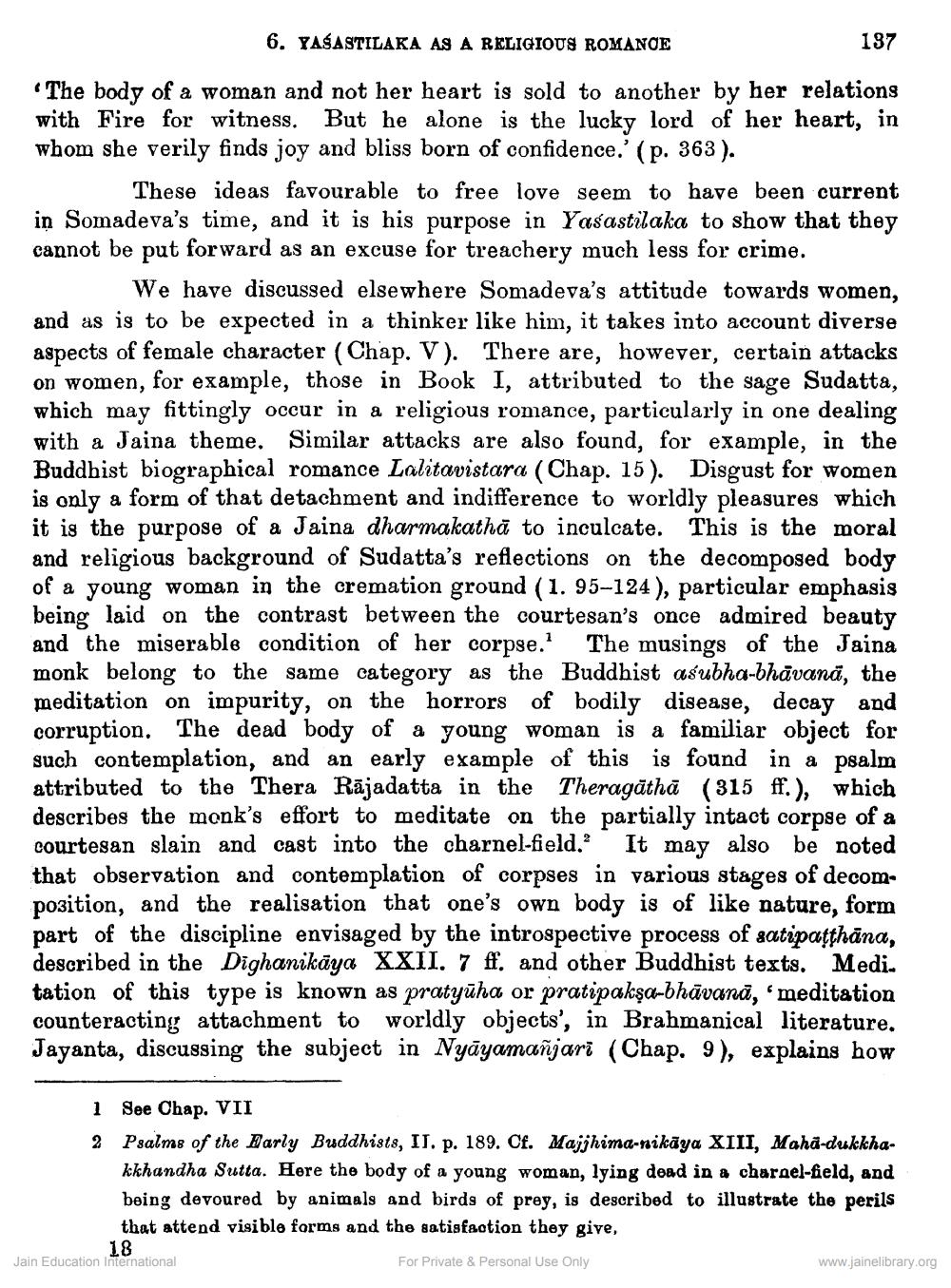________________
6. YASASTILAKA AS A RELIGIOUS ROMANCE
137
The body of a woman and not her heart is sold to another by her relations with Fire for witness. But he alone is the lucky lord of her heart, in whom she verily finds joy and bliss born of confidence.' (p. 363).
These ideas favourable to free love seem to have been current in Somadeva's time, and it is his purpose in Yasastilaka to show that they cannot be put forward as an excuse for treachery much less for crime.
We have discussed elsewhere Somadeva's attitude towards women, and as is to be expected in a thinker like him, it takes into account diverse aspects of female character (Chap. V). There are, however, certain attacks on women, for example, those in Book I, attributed to the sage Sudatta, which may fittingly occur in a religious romance, particularly in one dealing with a Jaina theme. Similar attacks are also found, for example, in the Buddhist biographical romance Lalitavistara (Chap. 15). Disgust for women is only a form of that detachment and indifference to worldly pleasures which it is the purpose of a Jaina dharmakathā to inculcate. This is the moral and religious background of Sudatta's reflections on the decomposed body of a young woman in the cremation ground (1. 95–124), particular emphasis being laid on the contrast between the courtesan's once admired beauty and the miserable condition of her corpse. The musings of the Jaina monk belong to the same category as the Buddhist asubha-bhāvanā, the meditation on impurity, on the horrors of bodily disease, decay and corruption. The dead body of a young woman is a familiar object for such contemplation, and an early example of this is found in a psalm attributed to the Thera Rājadatta in the Theragātha (315 ff.), which describes the monk's effort to meditate on the partially intact corpse of a courtesan slain and cast into the charnel-field. It may also be noted that observation and contemplation of corpses in various stages of decompozition, and the realisation that one's own body is of like nature, form part of the discipline envisaged by the introspective process of satipatthāna, described in the Dighanikāya XXII. 7 ff. and other Buddhist texts. Medi. tation of this type is known as pratyūha or pratipakşa-bhāvanā, meditation counteracting attachment to worldly objects', in Brahmanical literature. Jayanta, discussing the subject in Nyāyamañjari (Chap. 9), explains how
1 See Chap. VII 2 Psalms of the Early Buddhists, II. p. 189. Cf. Majjhima-nikāya XIII, Maha-dukkha
kkhandha Sutta. Here the body of a young woman, lying dead in a charael-field, and being devoured by animals and birds of prey, is described to illustrate the perils that attend visible forms and the satisfaction they give,
18
Jain Education International
For Private & Personal Use Only
www.jainelibrary.org




